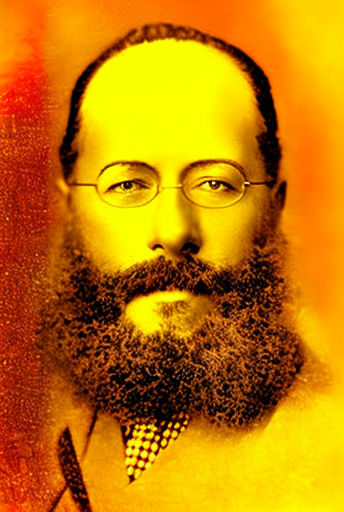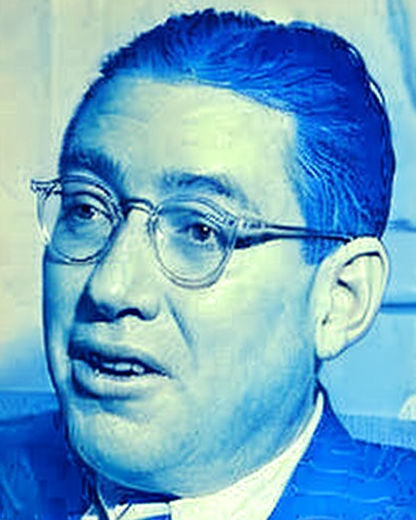When you make a purchase through links on our site, we may earn an affiliate commission As an Amazon Associate I earn from qualifying purchases..
Famous Limerick Writers and Limerick Poets
Limericks are a type of poetry that is known for its fun wit and creative expression. Throughout history, many famous writers have used the limerick form in order to express their creative writing skills.
Limericks are a type of poem that has five lines with a rhyme scheme called AABBA. Most limericks are funny, but some are bawdy or suggestive as well.

When writing a limerick, it is important to remember the correct syllable count and structure of the words. This helps ensure that the reader understands what is being written and will appreciate the poem.
The limerick is a popular literary form, and many amateur poets have used it to express their creative talents. In addition, many established writers have also written limericks. Some of the most famous limerick writers include Edward Lear, Ogden Nash and John Marshall. All of these authors have a unique style and use witty words to create their own unique poems.
Some of the most famous limerick poets include Edward Lear, Lewis Carroll and Ogden Nash. However, there are other famous limerick authors as well.
Edward Lear
Edward Lear, an artist and author, was a renowned writer in his time and made limericks famous. He published his first book of limericks in 1846.

There was an Old Man in a tree, Who was horribly bored by a Bee; When they said, 'Does it buzz?' He replied, 'Yes, it does! It's a regular brute of a Bee.'
Ogden Nash
One of the most popular American poets, Ogden Nash is best known for his witty and pun-like poems. He wrote 20 volumes of poetry and died in 1971.

Ogden Nash was born in Rye, New York, on August 19, 1902. His parents were Mattie and Edmund Strudwick Nash.
His childhood was characterized by frequent changes in homes as his family worked in the import-export business. During this time, Nash developed a passion for writing poetry.
He graduated from high school in 1920 and enrolled at Harvard. However, he dropped out in 1921. He then held several jobs, including work on Wall Street, as a teacher at his alma mater in Rhode Island and as a copywriter.
There was a young lady of Niger, Who smiled as she rode on a tiger; They returned from the ride With the lady inside, And the smile on the face of the tiger.
Sean O’ Tuama
Seán Ó Tuama (1916-1961) was an Irish poet and playwright, known for his contributions to the Irish language literary revival of the mid-twentieth century. He was born in Cork, Ireland, and grew up speaking Irish as his first language. He began writing poetry in his teens and went on to study at University College Cork, where he became involved in the Gaelic Society and the Cork Dramatic Society.
Ó Tuama was a prolific writer and his work encompasses a wide range of genres, including poetry, drama, essays, and literary criticism. He is best known for his poetry in Irish, which often drew on traditional forms such as the aisling and the limerick. One of his most famous works is the collection “Máinlia,” which includes a number of humorous limericks.
In addition to his writing, Ó Tuama was also a noted scholar and teacher of Irish language and literature. He served as a professor at University College Cork and was a prominent member of the Irish-language literary community. His contributions to the revival of the Irish language and culture have had a lasting impact on Irish literature and society.
Overall, Seán Ó Tuama was a key figure in the Irish literary revival, and his work in poetry, drama, and scholarship continues to be celebrated today.
There once was a farmer from Clare Whose face was exceedingly rare His nose was all wrong It was six inches long And he scratched it, just like a bear!
Shel Silverstein
Shel Silverstein was an American poet, songwriter, musician, and children’s author who gained worldwide recognition for his works. He was born on September 25, 1930, in Chicago, Illinois, and passed away on May 10, 1999, at the age of 68. Silverstein was known for his unique style of writing that blended humor and satire with insightful and meaningful themes.
Silverstein’s most famous work is his collection of poems for children, “Where the Sidewalk Ends,” which was first published in 1974. The book includes many of his well-known poems such as “Sick,” “Sarah Cynthia Sylvia Stout Would Not Take the Garbage Out,” and “Where the Sidewalk Ends.” The book was a commercial success, selling over 4 million copies in the United States alone and has been translated into many languages worldwide.
In addition to his children’s works, Silverstein was also a prolific songwriter, penning several popular songs throughout his career. Some of his most famous songs include “A Boy Named Sue,” which was made famous by Johnny Cash, and “The Unicorn,” which was popularized by The Irish Rovers. He was also a talented illustrator, providing the illustrations for many of his books.
Silverstein’s works continue to be popular with children and adults alike, due to their timeless themes and universal appeal. His unique style and wit have inspired countless writers and artists and have left an indelible mark on the literary world.
There once was a crocodile crying, Who thought the world had been lying, He said, "I can't grin, And I can't swim, And my tears are surely worth buying."
Lewis Carroll
Lewis Carroll, born Charles Lutwidge Dodgson, was a British writer, mathematician, and logician, best known for his children’s novels “Alice’s Adventures in Wonderland” and “Through the Looking-Glass.” These beloved classics continue to captivate generations of readers with their imaginative storytelling, clever wordplay, and whimsical characters.
Carroll’s love of puzzles and games is evident in his writing, where he frequently employs riddles, puns, and other language games. His skillful use of language and ability to create memorable characters have made his works timeless classics that continue to be enjoyed by children and adults alike. In addition to his literary contributions, Carroll’s work in mathematics and logic also had a significant impact on his time, with several of his logical puzzles still studied today.
Despite his success as a writer and mathematician, Carroll was known for his reserved nature and reluctance to seek the spotlight. He maintained a private life and even used a pseudonym for his writing. Nonetheless, his contributions to literature and logic have made him an enduring figure in history, and his works continue to be celebrated and enjoyed around the world.
There was an old man with a beard, Who said, "It is just as I feared! Two owls and a hen, Four larks and a wren, Have all built their nests in my beard."
Rudyard Kipling
Rudyard Kipling was an English writer and poet who is best known for his works that celebrate the British Empire and colonialism. Born in India in 1865, Kipling spent much of his childhood in the country before returning to England for his education. He began his writing career as a journalist, and later turned to fiction and poetry.
Kipling’s most famous works include “The Jungle Book,” a collection of stories about a young boy raised by wolves in the Indian jungle, and “Kim,” a novel about an orphan boy who becomes involved in espionage during the British Raj. In addition to his fictional works, Kipling was also a prolific poet, and his poem “If—” is still widely read and quoted today.
Kipling’s writing is often criticized for its imperialist and racist overtones, but it also contains themes of loyalty, duty, and patriotism. He was awarded the Nobel Prize in Literature in 1907, becoming the first English-language writer to receive the honor. Today, Kipling’s works continue to be studied and debated for their complex themes and historical context.
There was a small boy of Quebec, Whose father was scared he'd defect; So he gave him a toy, Of the glorious employ, And he's now Prime Minister elect.
Spike Milligan
Spike Milligan was a British comedian, writer, and actor known for his offbeat humor and unconventional style. He was a prolific writer and penned numerous books, including many collections of poetry and limericks.
Milligan’s limericks were often surreal, absurd, and filled with wordplay. He used the form to explore strange and nonsensical scenarios, playing with the rhythms and sounds of the words to create humorous and memorable verses.
One of his most famous limericks goes:
There was an old person of Ealing, Who was wholly devoid of good feeling, He ran up and down Within sight of the town, Which annoyed all the people of Ealing.
This limerick is a great example of Milligan’s wit and whimsy, as well as his ability to create vivid and unexpected images through his writing.
In addition to his limericks, Milligan was also known for his work on the radio and television, including the popular British comedy series “The Goon Show.” His influence on British comedy cannot be overstated, and his unique style and irreverent humor continue to inspire comedians and writers today.
Spike Milligan’s limericks are a testament to his creativity and his ability to find humor in even the most absurd situations. His legacy as a writer, comedian, and performer will undoubtedly continue to entertain and inspire audiences for generations to come.
James Joyce
James Augustine Aloysius Joyce was born in Dublin, Ireland and he is one of the most famous irish writers of the twentieth century. He is known for his masterpiece, Ulysses which has been hailed as one of the greatest novels ever written.
His writings are often centered around the social and political issues that were revolving in Ireland at the time of his birth. In particular, he explores the tumultuous early 20th century with the Irish independence movement and Charles Stewart Parnell’s nationalist politics.
He is also known for his love of writing and experimentation with new literary forms. He is credited with having spawned a new style in fiction and his writings are considered some of the best of his times.
While Joyce is not typically known for his limericks, he did write a few humorous poems throughout his career.
One of Joyce’s most famous humorous poems is “The Holy Office”, which is often referred to as a limerick due to its bouncy, sing-song rhythm:
In the dream of a proud pope I saw St. Peter with his keys of awe, And I said: "I will go Where the drunken breezes blow In the drift of the world below."
While not a traditional limerick in terms of structure, the poem has a playful, witty tone that is reminiscent of the form.
Another poem by Joyce that is often compared to a limerick is “She Weeps Over Rahoon”, which is written in a similar bouncy rhythm and features humorous rhymes:
She weeps over Rahoon falls,
Dewdrops on her breath and brow;
Her voice is low and sweet as 'twas
When she was a girl;—but now
Her voice is like her beauty,
Clear and bright as the spray
Of the crested waves that leap
Laughing in the wind's wild way.
While Joyce may not have been known for his limericks, his playful use of language and humorous tone in these poems show that he had a knack for the form.
Robert Louis Stevenson
Robert Louis Stevenson was a Scottish novelist, poet, and travel writer who is best known for his works of adventure fiction, including “Treasure Island,” “Kidnapped,” and “The Strange Case of Dr. Jekyll and Mr. Hyde.” He was born in Edinburgh, Scotland, in 1850 and was a sickly child, spending much of his time in bed. However, he was an avid reader and began writing stories at a young age.
Stevenson’s writing style was characterized by his ability to create vivid and memorable characters, his use of suspense and adventure, and his skillful use of language. His works often explored the darker aspects of human nature, and he had a particular fascination with the duality of human personality.
In addition to his novels and short stories, Stevenson was also a talented poet, and his poetry has been praised for its beauty and lyricism. He spent much of his life traveling and exploring new places, and his experiences abroad often found their way into his writing.
Stevenson’s works continue to be popular to this day, and he is widely regarded as one of the greatest writers of the 19th century. His stories have been adapted into numerous films, television shows, and stage productions, and his legacy continues to inspire new generations of writers and readers alike.
Robert Louis Stevenson is not typically known for his limericks, as they were not a primary focus of his writing. However, he did write a few humorous verses in this style, one of which goes:
There was an old man on the Border, Who lived in the utmost disorder; He danced with the cat, And made tea in his hat, Which vexed all the folks on the Border.
This limerick showcases Stevenson’s ability to play with language and create a silly scenario, which is a hallmark of the limerick form. While he may not be as well-known for his limericks as some other authors, this verse demonstrates his versatility as a writer and his ability to entertain through his words.
Hilaire Belloc
Hilaire Belloc (1870-1953) was an Anglo-French writer, poet, historian, and politician. He is known for his versatile literary works that spanned across various genres, from children’s books to adult novels, travel writing, essays, and poetry. Born in France, Belloc spent his early childhood in Sussex, England, where he developed a profound love for the English countryside, which later became a recurring theme in his works. He was educated at Oxford University and later became a naturalized British citizen.
Belloc was a prolific writer, producing over 150 books during his lifetime. He is best known for his Cautionary Tales for Children (1907), a collection of humorous and satirical poems, which gained widespread popularity among children and adults alike. The book featured illustrated stories such as “Jim, who ran away from his Nurse, and was eaten by a Lion,” and “Matilda, who told Lies, and was Burned to Death,” that aimed to teach moral lessons in a playful manner.
Apart from his contributions to children’s literature, Belloc was also a renowned historian, with several of his books on the subject still considered classics. He is best known for his work The Servile State (1912), which criticized the political and economic systems of his time and proposed a more just and equitable society. Belloc was also an accomplished poet, with works such as The Four Men (1911), a narrative poem that follows four characters as they walk through the English countryside, and Cautionary Tales and Other Verses (1912), which contained many of his earlier poems.
In addition to his literary work, Belloc was also an active politician. He served as a Member of Parliament for the Conservative Party from 1906 to 1910, and later, as an Independent MP. He was a strong advocate for distributism, a social and economic philosophy that aimed to promote a more equal distribution of wealth and ownership of property.
Overall, Hilaire Belloc was a highly influential and versatile writer whose works continue to be studied and appreciated today. His wit, humor, and profound insights into human nature and society have left a lasting impact on English literature and culture.
There was a young lady of Kent, Whose nose was exceedingly bent; She walked up a hill, In the middle of Still, And declared she'd go back as she went.
W. S. Gilbert
W. S. Gilbert (1836-1911) was an English dramatist, librettist, and illustrator, best known for his collaboration with composer Arthur Sullivan on a series of comic operas, including “H.M.S. Pinafore”, “The Pirates of Penzance”, and “The Mikado”. Gilbert wrote the libretti for these operas, which were known for their witty lyrics and satirical commentary on Victorian society. He also wrote plays, novels, short stories, and poetry.
In addition to his work in the theater, Gilbert was an accomplished illustrator and cartoonist. He began his career as an artist, contributing illustrations and caricatures to several magazines, including Punch. His illustrations were known for their humor and satirical commentary on society.
Gilbert’s limericks were not as well-known as his operas and illustrations, but he did write a few of them. One of his more famous limericks goes:
"There was an old man of St. Bees, Who was stung in the arm by a wasp. When asked, "Does it hurt?" He replied, "No, it doesn't, But I thought all the while 'twas a Hornet'."
_________________________

Thank You for Your Donation!
There once was a donor so kind,
Whose gift was so easy to find,
We thank you with glee,
For your generosity,
And hope you’ll keep us in mind.















